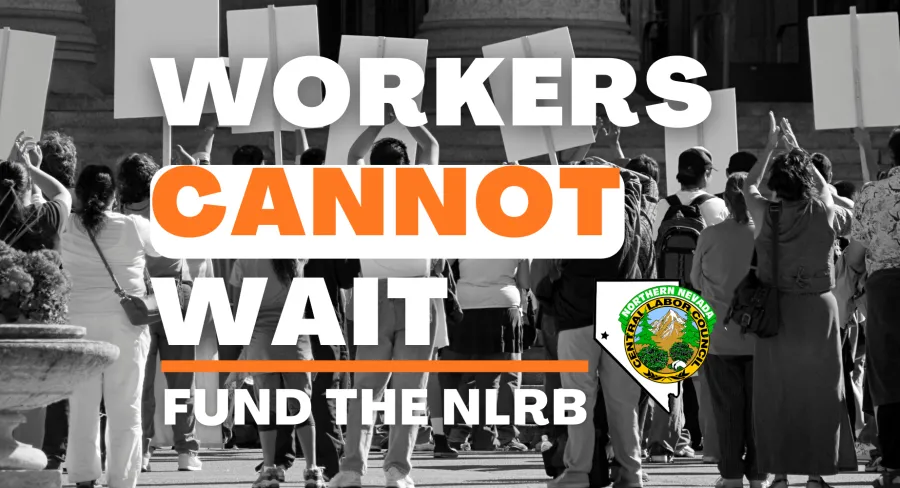Workers Can't Wait. Fund the NLRB!

From the AFL-CIO Office of the President
As the new year approaches and the 117th Congress comes to a close, we have a brief window to advance our work to support working families through federal action. The labor movement stood up and fought to prevent a red wave—and we stopped it. But we have more work to do, as the Republican majority in the House of Representatives will make our work more difficult next year.
That’s why we are making it a top priority for Congress to fully fund the National Labor Relations Board (NLRB) before next year, when an anti-worker majority takes control of the House. As you know, congressional Republicans have successfully blocked repeated efforts to fully fund the NLRB. For the National Labor Relations Act to protect workers’ right to organize, we need all hands on deck to ensure that Congress prioritizes NLRB funding.
The NLRB has been flat-funded at $274.2 million for nearly 10 years; it has not received a budget increase since FY 2014. Adjusting for inflation, that means the agency has effectively taken a 25% budget cut. This is because Republican senators have refused to negotiate on any budget increase whatsoever. This effective “defund the NLRB” tactic, made possible through the filibuster, has exacerbated the issues we are fighting to fix through the PRO Act and limited the NLRB’s ability to enforce even the weak laws we have on the books. We have seen this before—it is simply another page in Republican leaders’ corporate playbook to undermine President Biden’s NLRB and General Counsel, and their ability to protect concerted activity and collective bargaining rights.
Flat-funding has created massive staffing shortages in the NLRB’s field offices, which process all union representation petitions and unfair labor practice charges. They have lost 35% of field staff since 2010, and field office numbers are half of what they were in 2002. At current funding levels, the agency will likely need to initiate a furlough, harming NLRB employees and exacerbating the problem.
This undermines the surge in worker organizing we have seen in recent years. Unfair labor practice charges went up 20% in FY 2022 from FY 2021, and election petitions increased by 53%. NLRB staff are simply unequipped to process cases quickly with current staffing levels.
On the heels of our work in the midterms, which featured 100,000 volunteers and reached 7.7 million voters, we’re now quickly pivoting and asking many of those pro-worker candidates to fight for NLRB funding.
The Senate will likely vote on appropriations funding later this month. We’re asking all state federations and central labor councils to contact their senators immediately to fight for an NLRB funding increase from $274 million to $368 million.
If your senators have already expressed general support for NLRB funding, ask them to prioritize this issue, and make sure the Senate Appropriations Committee and Senate leadership are aware of their support. We cannot allow anti-worker senators to continue to block this critical funding. We are sharing with you a fact sheet on the issue that can guide your conversations.
As you make plans to engage your senators, we encourage you to include community allies in your engagement. With polls showing support of unions at 68%, having allies partner in mobilization and expressing the critical need to fund the NLRB strengthens the message. President Shuler and international union presidents are also urging senators to support NLRB funding and make this crisis a priority.
We believe the vast majority of Democratic senators support increased NLRB funding. Please let your senior field rep or your regional field director know of any senator who refuses your request to prioritize this issue and communicate that support to Senate leadership.
AFL-CIO
Office of the President
815 Black Lives Matter Plaza
Washington, DC 20006
